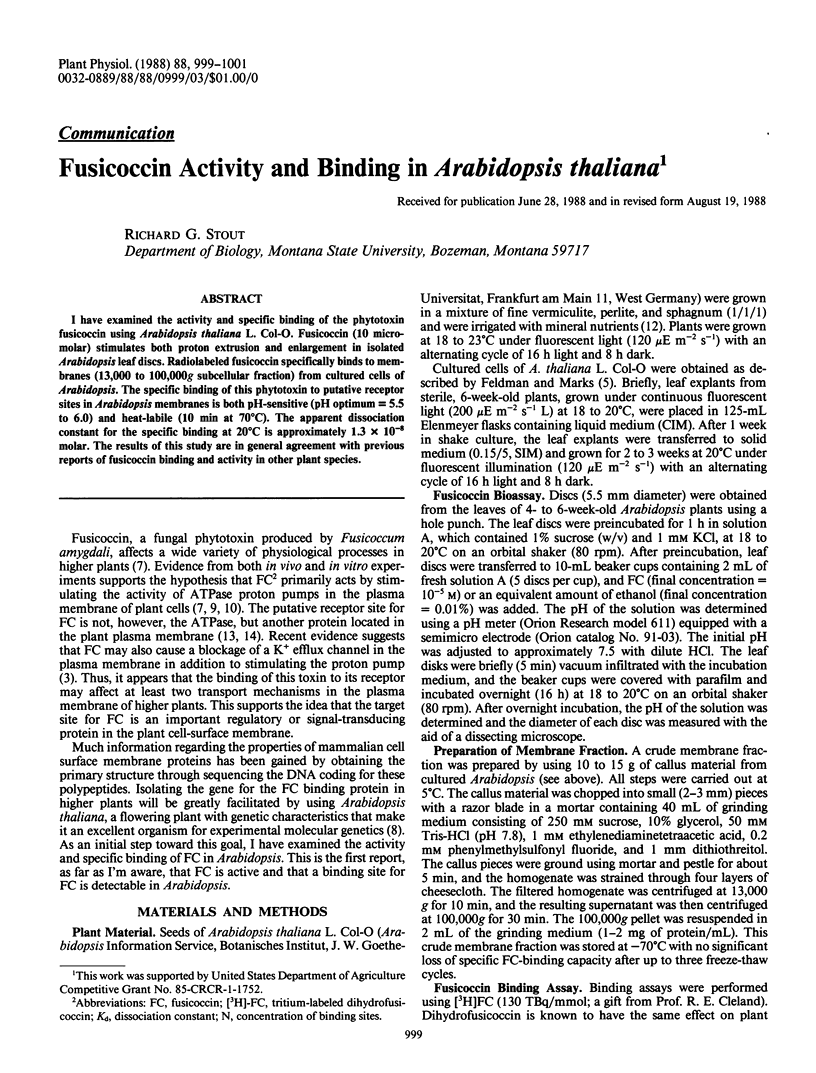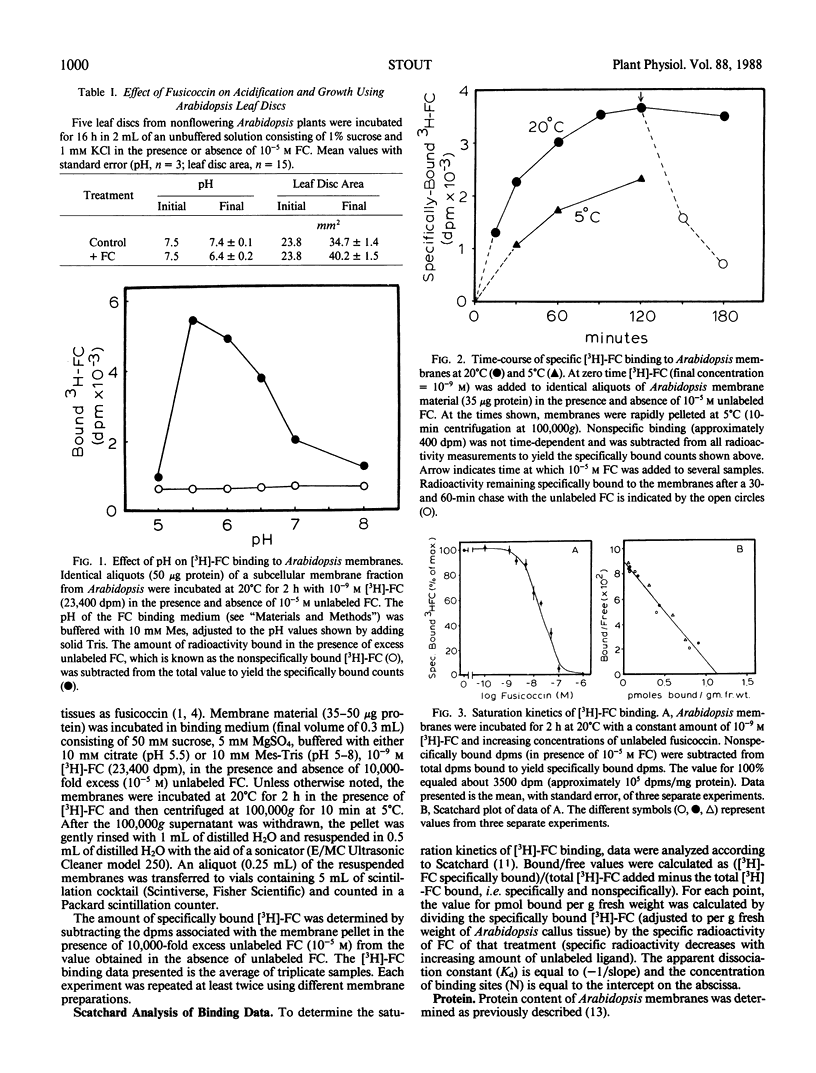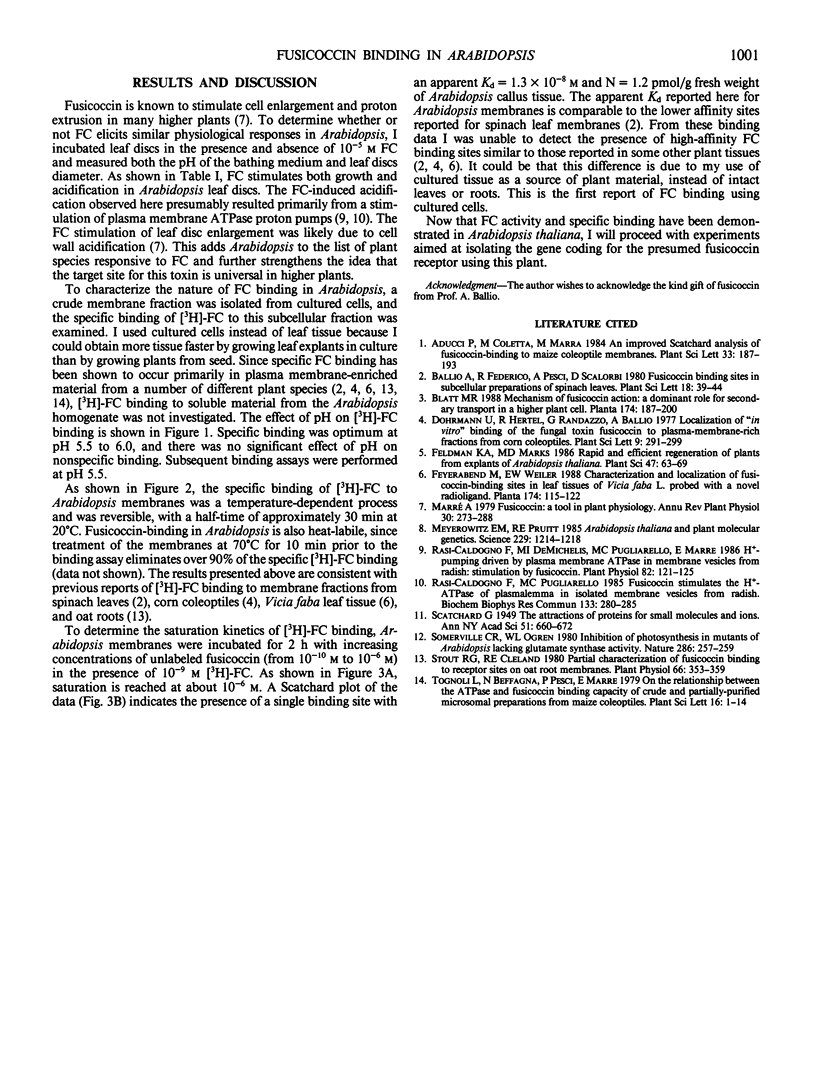Abstract
I have examined the activity and specific binding of the phytotoxin fusicoccin using Arabidopsis thaliana L. Col-O. Fusicoccin (10 micromolar) stimulates both proton extrusion and enlargement in isolated Arabidopsis leaf discs. Radiolabeled fusicoccin specifically binds to membranes (13,000 to 100,000g subcellular fraction) from cultured cells of Arabidopsis. The specific binding of this phytotoxin to putative receptor sites in Arabidopsis membranes is both pH-sensitive (pH optimum = 5.5 to 6.0) and heat-labile (10 min at 70°C). The apparent dissociation constant for the specific binding at 20°C is approximately 1.3 × 10−8 molar. The results of this study are in general agreement with previous reports of fusicoccin binding and activity in other plant species.
Full text
PDF


Selected References
These references are in PubMed. This may not be the complete list of references from this article.
- Meyerowitz E. M., Pruitt R. E. Arabidopsis thaliana and Plant Molecular Genetics. Science. 1985 Sep 20;229(4719):1214–1218. doi: 10.1126/science.229.4719.1214. [DOI] [PubMed] [Google Scholar]
- Rasi-Caldogno F., De Michelis M. I., Pugliarello M. C., Marrè E. H-pumping driven by the plasma membrane ATPase in membrane vesicles from radish: stimulation by fusicoccin. Plant Physiol. 1986 Sep;82(1):121–125. doi: 10.1104/pp.82.1.121. [DOI] [PMC free article] [PubMed] [Google Scholar]
- Rasi-Caldogno F., Pugliarello M. C. Fusicoccin stimulates the H+-ATPase of plasmalemma in isolated membrane vesicles from radish. Biochem Biophys Res Commun. 1985 Nov 27;133(1):280–285. doi: 10.1016/0006-291x(85)91872-8. [DOI] [PubMed] [Google Scholar]
- Stout R. G., Cleland R. E. Partial characterization of fusicoccin binding to receptor sites on oat root membranes. Plant Physiol. 1980 Sep;66(3):353–359. doi: 10.1104/pp.66.3.353. [DOI] [PMC free article] [PubMed] [Google Scholar]


